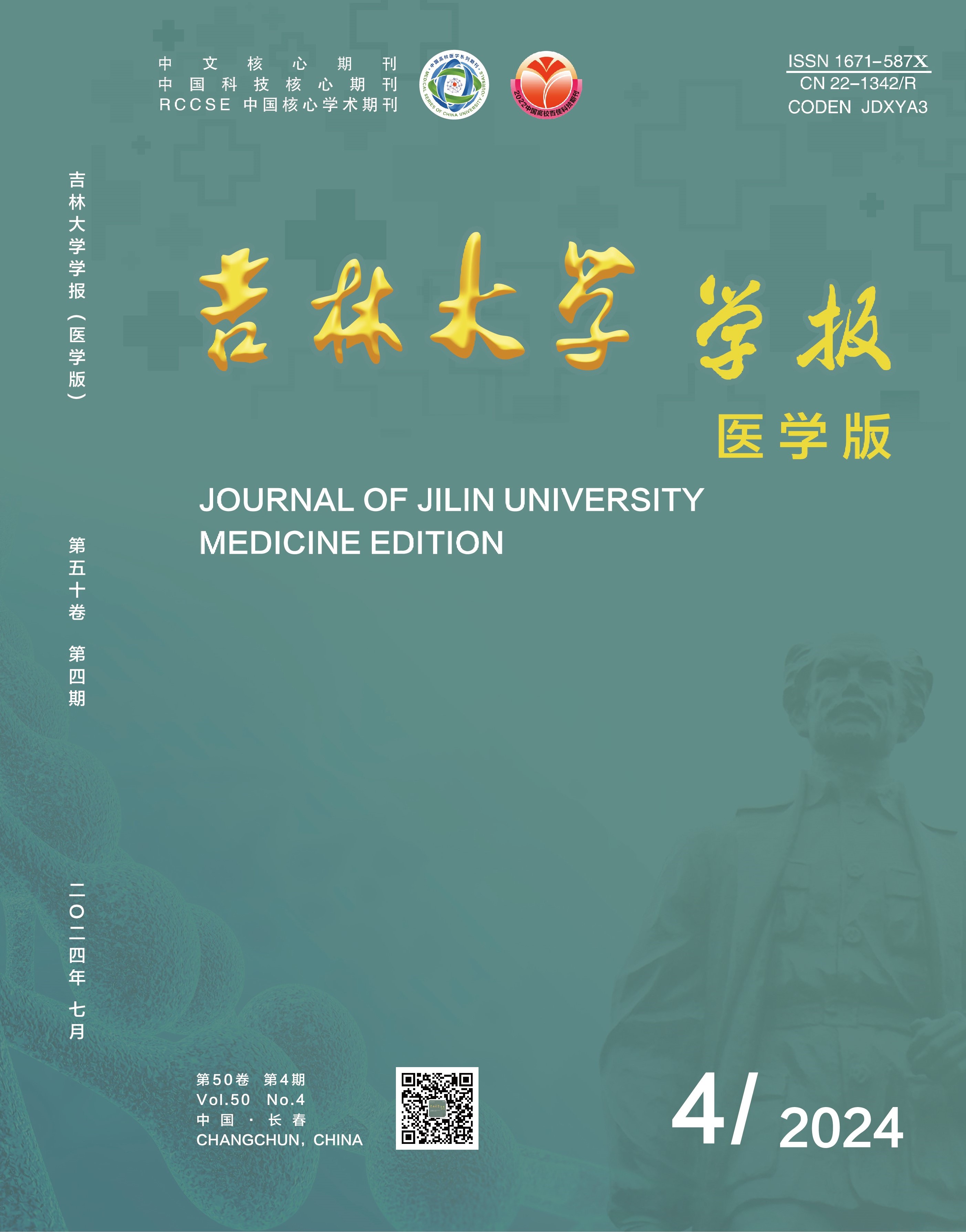Information
Author Center
Writing Guidelines
WeChat

WeChat: JLDXXBYXB
Follow our WeChat account to check the status of submitted articlesand learn more about latest academic achievements.
Highlights
 Expressions of Sirtuins protein in testis tissue and GC-2 cells in male reproductive system damage model mice induced by bisphenol A and their significances——Lu FU, Yanjue YE, Jiangying LI, Ziyi TANG, Li YIN
Expressions of Sirtuins protein in testis tissue and GC-2 cells in male reproductive system damage model mice induced by bisphenol A and their significances——Lu FU, Yanjue YE, Jiangying LI, Ziyi TANG, Li YIN
 Improvement effect of glucagon-like peptide-1 receptor agonist on injury of cardiomyocytes in rats in hyperglycemia and hyperlipidemia environment and its iron death mechanism—— MENGGENTUOYA, Xiangzhen YUAN, Xiaojiang XIE, Ling CHENG, Miao LIU
Improvement effect of glucagon-like peptide-1 receptor agonist on injury of cardiomyocytes in rats in hyperglycemia and hyperlipidemia environment and its iron death mechanism—— MENGGENTUOYA, Xiangzhen YUAN, Xiaojiang XIE, Ling CHENG, Miao LIU
 Effect of apigenin on polarization and inflammation of mouse RAW264.7 macrophages and its mechanism——Haitao LI, Qin LI, Fei CAI, Guofu HU, Yunfei TENG
Effect of apigenin on polarization and inflammation of mouse RAW264.7 macrophages and its mechanism——Haitao LI, Qin LI, Fei CAI, Guofu HU, Yunfei TENG
 Effectof Cav3.2 gene in treatment of stress urinary incontinence in mice by pelvic floor electrical stimulation and its mechanism——Jianfeng LIU, Jianming TANG, Lian YANG, Shufei ZHANG, Li HONG
Effectof Cav3.2 gene in treatment of stress urinary incontinence in mice by pelvic floor electrical stimulation and its mechanism——Jianfeng LIU, Jianming TANG, Lian YANG, Shufei ZHANG, Li HONG
 Improvement effect of follistatin-like 1 on doxorubicin-induced acute myocardial injury in mice and its mechanism——Yintao ZHAO, Yingying YANG, Xiangqin ZHANG, Lu ZHENG, Yawei XU, Haibo YANG, Yuan LIU
Improvement effect of follistatin-like 1 on doxorubicin-induced acute myocardial injury in mice and its mechanism——Yintao ZHAO, Yingying YANG, Xiangqin ZHANG, Lu ZHENG, Yawei XU, Haibo YANG, Yuan LIU
Current Issue
Journal Online

 Guide to Authors
Guide to Authors






